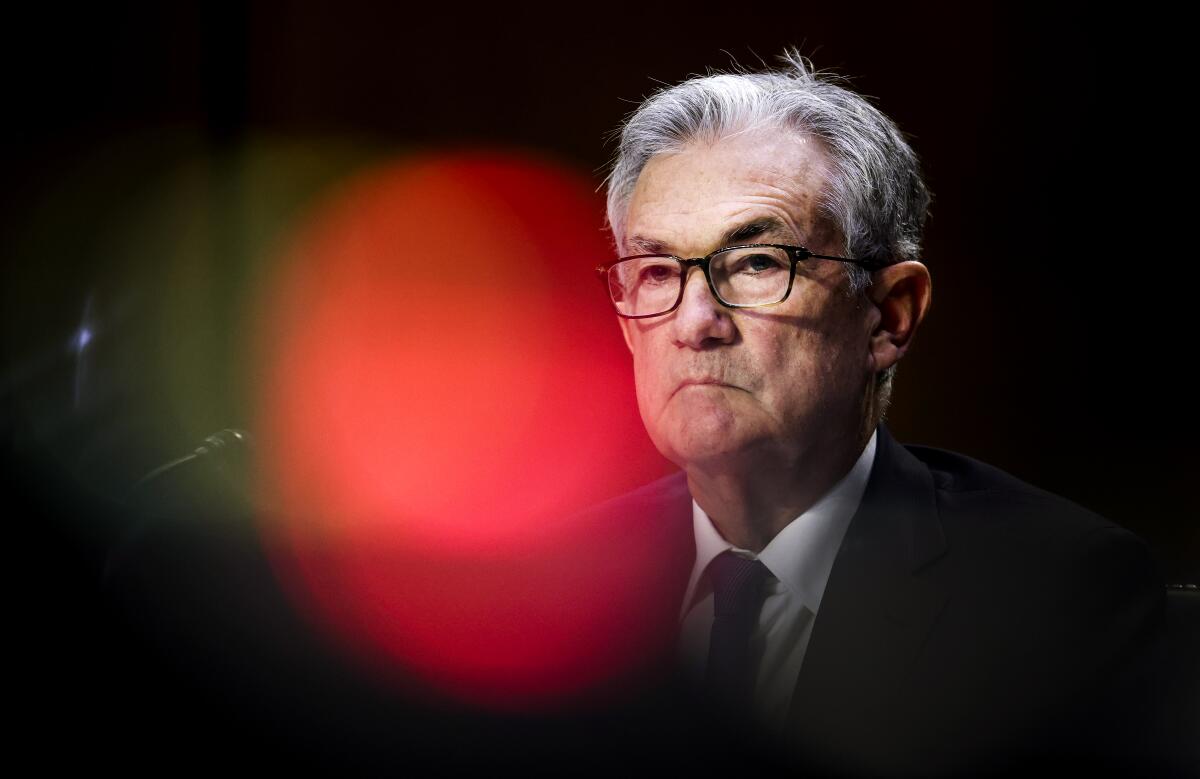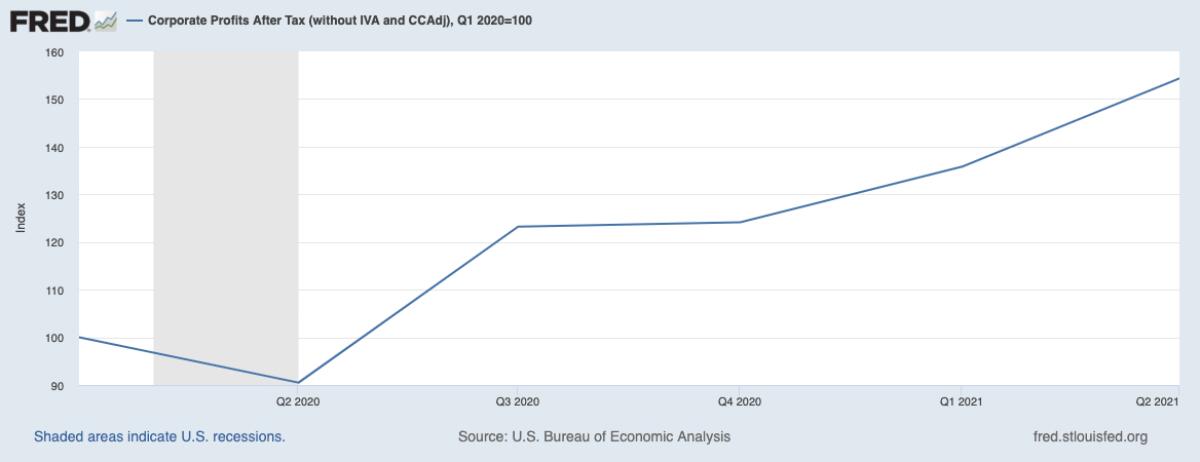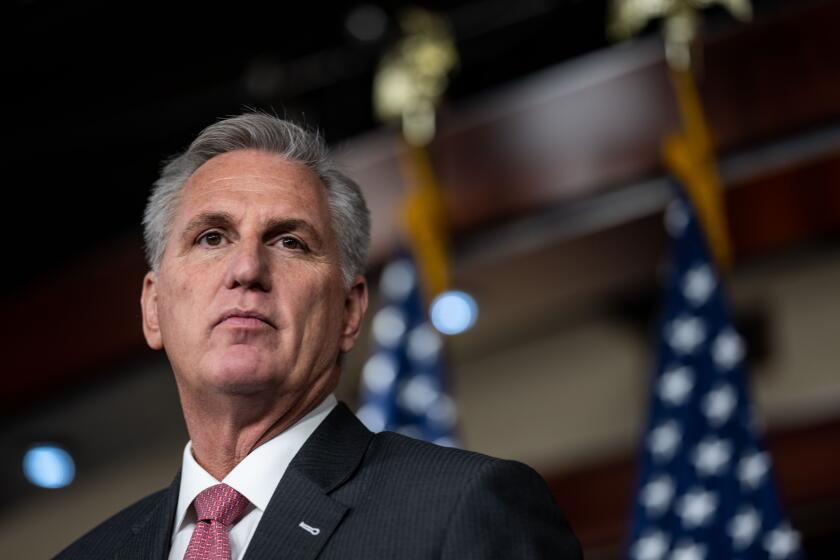Column: Inflation has spiked. Don’t freak out

- Share via
Before Wednesday, you would have been hard-pressed to find an economist who didn’t expect a surge of inflation to show up in the government’s monthly price report. As of Wednesday, you’d be hard-pressed to find one who isn’t shocked by the size of the surge.
The Bureau of Labor Statistics placed the increase in the consumer price index at 6.2% in October over a year earlier. That was its largest 12-month increase in more than 30 years, or since November 1990.
A rise in oil prices was the single biggest factor, the BLS said, but it leached into the economy as a whole. Food prices increased. Core inflation — absent food and energy — rose 4.6% over the last 12 months, the largest such increase since August 1991.
I hate to say this, but October’s core CPI is just a taster; the next few months are going to be horrible.
— Economist Ian Shepherdson
Price hikes were seen in “shelter, used cars and trucks, and new vehicles, the indexes for medical care, for household furnishing and operations, and for recreation.”
Among the few safe harbors cited by the BLS were airline fares, down 0.7%, and alcoholic beverages, down 0.2%, though prices of major appliances, most apparel and televisions came down as well.
Get the latest from Michael Hiltzik
Commentary on economics and more from a Pulitzer Prize winner.
You may occasionally receive promotional content from the Los Angeles Times.
The overall increase stunned many experts, some of whom redefined the term “transitory,” with which they had been labeling price increases seen in April, May and June.
“I hate to say this, but October’s core CPI is just a taster,” tweeted economist Ian Shepherdson of Pantheon Macroeconomics; “the next few months are going to be horrible.” Shepherdson warned the rate “ is headed for 6-6.5% over the next three months, and it could even hit 7%.”
Even perennially reliable inflation dove Kevin Drum sounded a bit unnerved by the October rate. “Those are big numbers!” he wrote. “But are they temporary, caused by shortages of goods and the injection of lots of COVID-19 money earlier in the year? I continue to think so, but only time will tell.”
That’s as precise an outlook as one is likely to get. The problem with inflation statistics is that they’re based on a confluence of factors, some of which are inherently unpredictable: macroeconomic conditions, the short-term situation and psychology.
The last of the three is the one that keeps inflation-watchers up at night, because it bears the potential to feed on itself. That concern was expressed Tuesday by Treasury Secretary Janet L. Yellen in an interview with NPR: “Inflation can be a self-fulfilling prophecy,” she said. “As wages go up and firms see their costs go up and raise prices, we get into what’s called the wage-price spiral that continues, unless the central bank comes in and puts that to a halt.”
The anti-deficit crowd is wrong about deficit spending. Don’t let them kill the Build Back Better plan.
Yellen said she expected the Federal Reserve to remain prepared to do just that, forestalling the return of the “stagflation” of the 1970s. In that era, she reminded listeners, “supply shocks” such as the oil embargo turned into endemic inflation. “We’re not seeing that now; I don’t believe we will.”
Yellen said she expects “price increases to level off and we’ll go back to inflation that’s close to the 2% we consider normal.”
Pantheon’s Shepherdson, like other economists, agreed, stating that he expects “as a base case that inflation will be way lower a year from now. But each big print in the meantime increased the risk that this view will be wrong, because of the potential lift to expectations and wage-setting.”
At this moment, the chief danger in the inflation numbers — and the expectations they may fuel — is essentially political. The specter of long-term price increases provides a talking point to opponents of the social and economic reforms the Biden administration and congressional Democrats are pressing through the Build Back Better plan.
Those include efforts to make child care and healthcare costs more equitable, to fight global warming, to augment early childhood education. Conservatives, who struggle to find arguments against all those reforms, have placed their offensive fortifications on the inflation threat. Now they have a tad more ammunition with which to say, “See?”
There’s no evidence that the latest numbers — or any inflation statistics this season — arise from macroeconomic factors as opposed to manifestly temporary factors such as spiking demand for goods, shortages of electronic parts such as chips, and backups of imported merchandise at U.S. ports. Fuel prices have soared higher because of resurgent post-pandemic demand and the refusal of OPEC to step up production to meet it.
Some of those factors are likely to persist for months or even intensify — some oil traders say they wouldn’t be surprised to see the price of that still-crucial commodity hit $100 a barrel, up from its current level in the mid-$80s and a price oil hasn’t seen since 2014.
Nor is there any doubt that the price increases the government reported have a definite effect on household budgets. Among other facets of the problem, the price increases of the last year have wiped out wage gains that had been won by rank-and-file workers over the same period.
As Jason Furman and Wilson Powell III reported at the end of October, wages and benefits had risen at a 5.4% annual rate over the previous three months, but price increases left workers with only a 0.6% gain and placed wages below their pre-pandemic levels.
But even the big numbers issued by the government Wednesday don’t match the extent to which inflation fears have reached the general public — stoked in part by ignorant reporting by the media.
Deficit hawks are trying to undermine federal spending, and they’re still wrong.
The best example of that is a report CNN aired Thursday that has been widely, and justly, ridiculed as inexcusably uninformed. The report focused on a Texas couple who said they were buying 12 gallons of milk a week for their nine children and that they were staggering under an increase in milk price to $2.79 a gallon from $1.99 a few months ago.
Leaving aside whether 12 gallons of weekly consumption is plausible even for a family that size, the fact is that the average price of a gallon of milk hasn’t been $1.99 in close to 40 years. Indeed, when accounting for inflation, its price has actually come down over the last 25 years or so.
Wednesday’s inflation report places the seasonally adjusted change in whole milk prices at negative 0.3% over the last year and negative 0.5% from June through September. (Unadjusted, it’s up 5.8% in a year, but that wouldn’t account for the 40% increase cited by the family.)
This isn’t to criticize the family, but to flay CNN, which should have reported the factual context of the household’s inflation experience. CNN didn’t mention, either, that the family is entitled to a monthly child tax credit of as much as $200 to $300 per child (depending on his or her age), which should help to moderate its burden.
The inflation spike demands deeper inquiry into its causes than it’s likely to get. One aspect that is sure to receive short shrift is the role of consumer pricing at the corporate level. According to the Bureau of Economic Analysis, corporate profits have risen by more than 50% since the beginning of 2020, pandemic be damned.

As Judd Legum observes at his Popular Information website, price increases on consumer products have been imposed by Procter & Gamble “from diapers to toilet paper,” citing increases in raw material costs; PepsiCo and Coca-Cola; and Whirlpool (the owner of appliance brands JennAir, Maytag, KitchenAid and Amana). All these companies are highly profitable and either announced stable profits or projected profit increases for the near future.
The companies’ complaints about increases in raw material and shipping costs may or may not be genuine, but it’s certainly plain that they’ve used talk about inflation to raise prices more than their cost increases warrant. That shows up in the government’s inflation numbers, without explanation.
The result is what economist Josh Bivens of the labor-oriented Economic Policy Institute calls the “unwarranted leap” of attributing the recent price spikes to “‘too much’ fiscal relief and recovery.” There’s no evidence that merely providing more assistance to ordinary households caused inflation and therefore should be abandoned.
It’s much more likely that factors such as the resumption of more conventional consumer habits, including a shift away from spending on services and back to goods, is behind the spike, combined with price pressures stemming from port logjams and manufacturing backups.
Inflation is a problem, and it may become worse before it gets better. But we warned: Misunderstanding by the public and policymakers — and deliberate distortion by those who would deprive ordinary Americans of the benefits of economic reform — is the much greater threat.
More to Read
Get the latest from Michael Hiltzik
Commentary on economics and more from a Pulitzer Prize winner.
You may occasionally receive promotional content from the Los Angeles Times.













